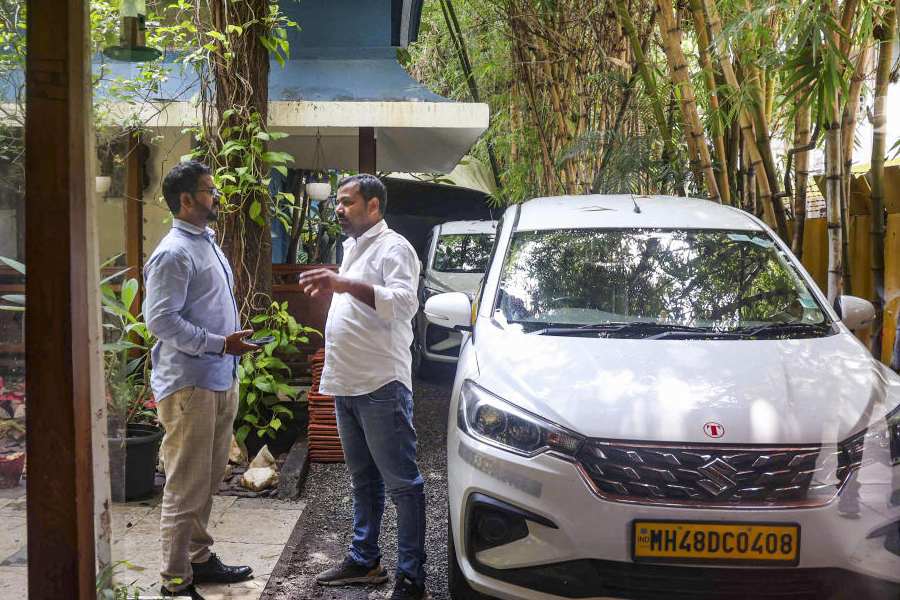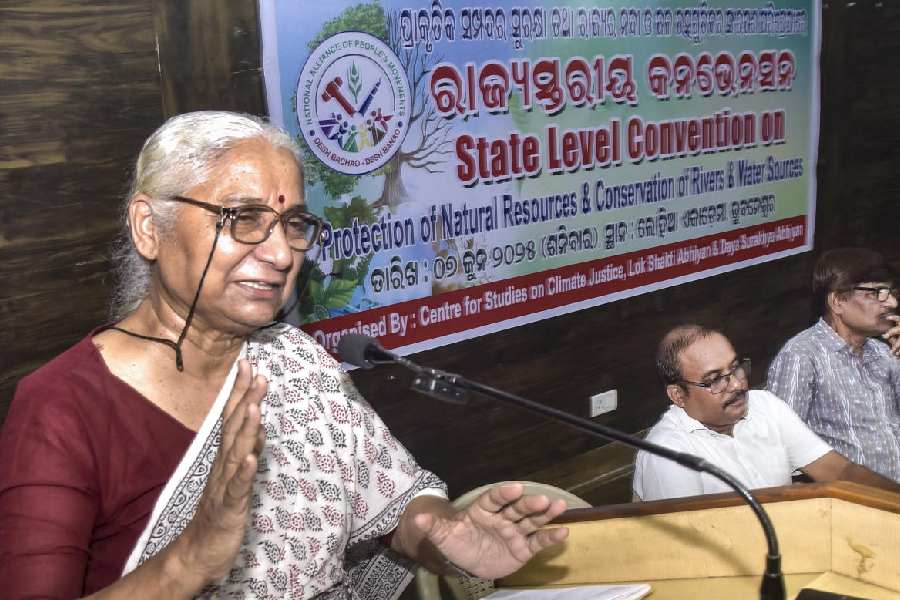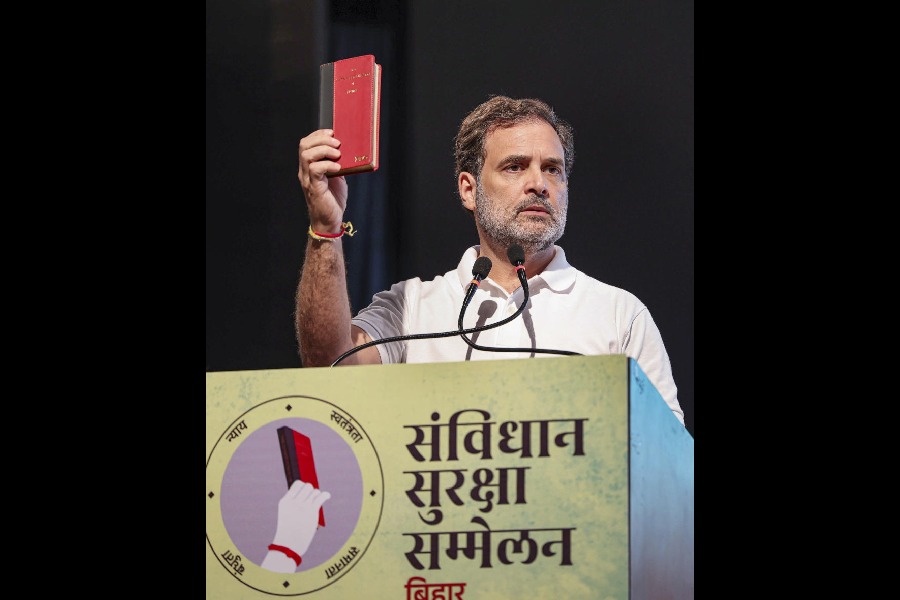 |
| Diplomats at a Delhi conference, where Pakistan has been eased out of the agenda, on Monday. (PTI picture) |
Washington, Aug. 24: A typical conversation with an Indian ambassador, or any Indian diplomat for that matter, in the last five weeks began with the diplomat asking in obvious disbelief: “How did this happen?”
The “this” in the question is a reference to the Sharm-el-Sheikh joint statement of July 16, which put it on record that Pakistani Prime Minister Yousaf Raza Gilani “mentioned” to Manmohan Singh “that Pakistan has some information on threats in Balochistan and other areas”. The implication was that the threats came from India in the form of cross-border terrorism.
The joint statement then announced an agreement that “action on terrorism should not be linked to the Composite Dialogue process (between India and Pakistan) and these should not be bracketed”. The implication, critics in India alleged, was that Pakistan could continue to condone — or even encourage — acts of terror by its nationals in Mumbai and elsewhere, but normal bilateral engagement would not be affected.
Clueless about how this came about, South Block’s envoys who are supposed to interpret Indian foreign policy to the rest of the world have been hoping that maybe, just maybe, an odd journalist may have an answer to the riddle that has openly exercised not only members of Parliament, but also the entire Indian Foreign Service, albeit quietly.
Till today, there has been no effort by the Prime Minister’s Office or the ministry of external affairs to credibly explain the joint statement to Indian diplomats or to take them into confidence on what happened in Sharm-el-Sheikh so that they could, in turn, interpret it to a curious world.
The man who honourably consented to bear the cross of “bad drafting” of the joint statement, foreign secretary Shiv Shankar Menon, has retired and retreated into dignified silence. Quite sensibly, his successor Nirupama Rao does not want to open a can of worms by revisiting the joint statement, for which she bears no responsibility.
The only other time an Indian government was similarly tongue-tied in dealings with its own diplomats was in the weeks following the demolition of the Babri Masjid.
Senior ambassadors were called to New Delhi, but then they were left to hang around South Block for days as confusion reigned in the then Prime Minister’s Office and no one anywhere on Raisina Hill had any answers to questions that these ambassadors may have asked.
In an attempt to reconstruct what actually transpired in Sharm-el-Sheikh, this correspondent has discovered that within the Indian delegation, there was no discussion, no tossing of words or no effort to nuance potentially sensitive disagreements in the crafting of the joint statement. Everything that is the norm in drafting a document of this kind was jettisoned in Sharm-el-Sheikh and a veil of secrecy was thrown on the entire process on the Indian side.
T.C.A. Raghavan is South Block’s point man on Pakistan, a former deputy high commissioner in Islamabad who could have provided inputs to Prime Minister Singh and avoided the predicament in which the UPA government now finds itself trapped on cross-border relations. But Raghavan was not taken to Sharm-el-Sheikh.
The explanation in South Block for not including Raghavan in the team that went to Sharm-el-Sheikh is that gem of an excuse civil servants revel in: there is no precedent.
This correspondent was told that the only time a joint secretary in charge of Pakistan was taken to an Indo-Pak summit held on the sidelines of another meeting was when Atal Bihari Vajpayee went for the UN General Assembly and met Pervez Musharraf in New York on its sidelines.
That is not entirely true, but that is beside the point. Vivek Katju, the joint secretary who accompanied at least two Prime Ministers to summit meetings with Pakistanis was in Sharm-el-Sheikh in a different capacity. He is now special secretary in charge of international organisations: that included the non-aligned movement whose summit was what brought Singh and Gilani to Sharm-el-Sheikh in the first place.
This correspondent has established that Katju was kept completely in the dark about the joint statement that was in the works in Sharm-el-Sheikh. He could have been consulted for a second opinion, if only because he handled Pakistan during the Kargil crisis. Besides, he would have been a touchstone precisely about the sensitivities on what has now given the UPA a bad name in its dealings with Pakistan.
Katju is a Kashmiri and has professed a hard line towards Islamabad throughout his professional life.
Or, maybe, it was precisely for that reason that Katju was kept in the dark. In Sharm-el-Sheikh, by the time Katju first read the joint statement, it had already been issued as a media release. He held his head between his hands and stared at the document in disbelief, according to a colleague who was with him at that time.
Sources who worked closely with the then foreign secretary in Sharm-el-Sheikh said that in the days prior to the summit, Menon and his Pakistani counterpart Salman Bashir — whose visceral hatred of India is well known — sat down several times but they were poles apart on a joint statement.
However, at the end of the one-on-one meeting between the two Prime Ministers, they summoned Menon and Bashir and told them to finalise a joint statement.
At this point, Singh made a big mistake which is haunting him now. Instead of seizing the initiative and telling the two foreign secretaries what to put into the statement, Singh left it to Gilani to define the contents of the statement, which he ably did — the way his country wanted it.
That outline contained the reference to Balochistan and delinked terrorism from the bilateral dialogue framework. Singh suggested some amendments, but the changes he suggested did not specifically exclude references to Balochistan or to the composite dialogue. Like good civil servants, Menon and Bashir received their orders and dutifully produced a joint statement that their bosses wanted.










